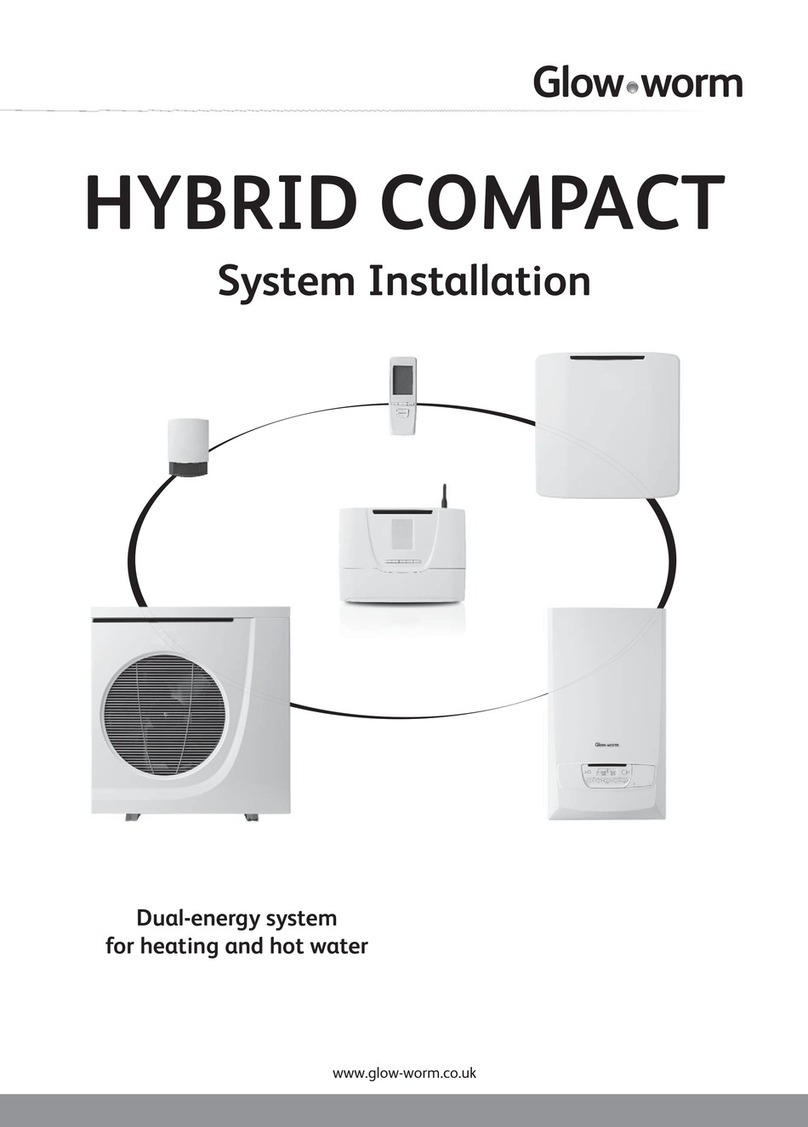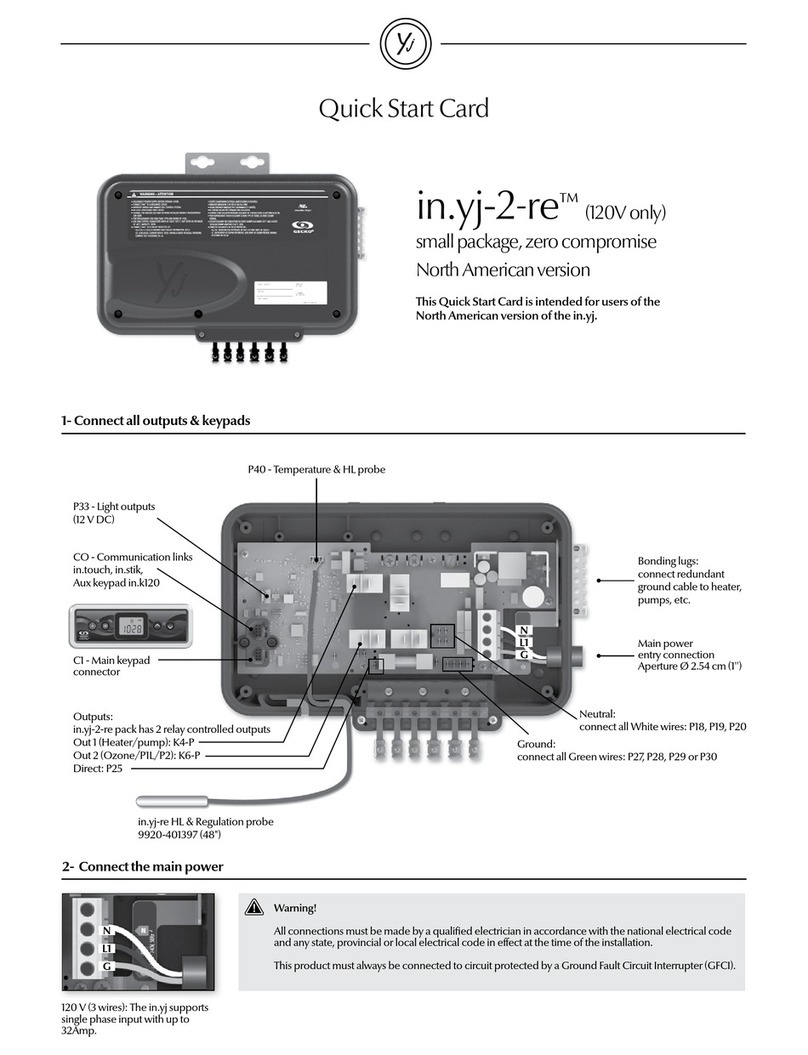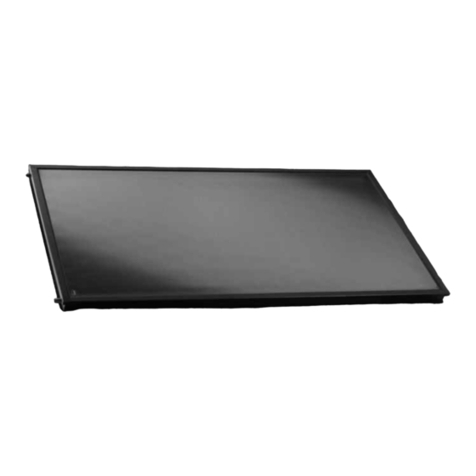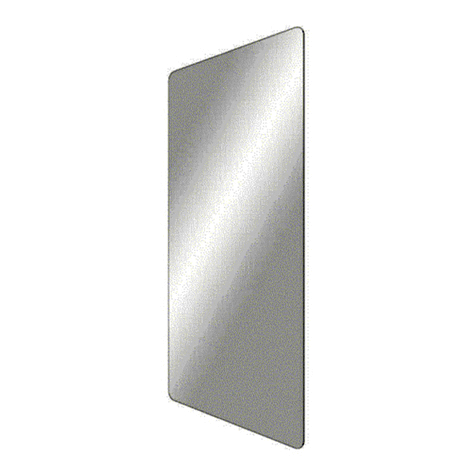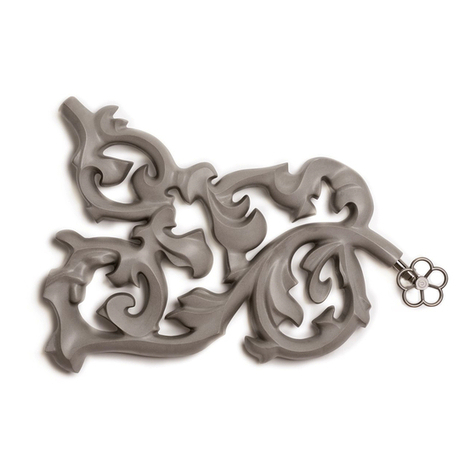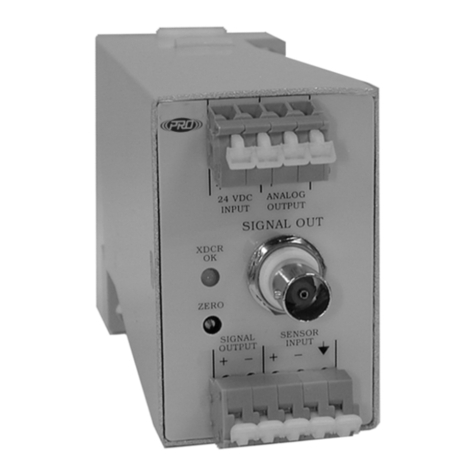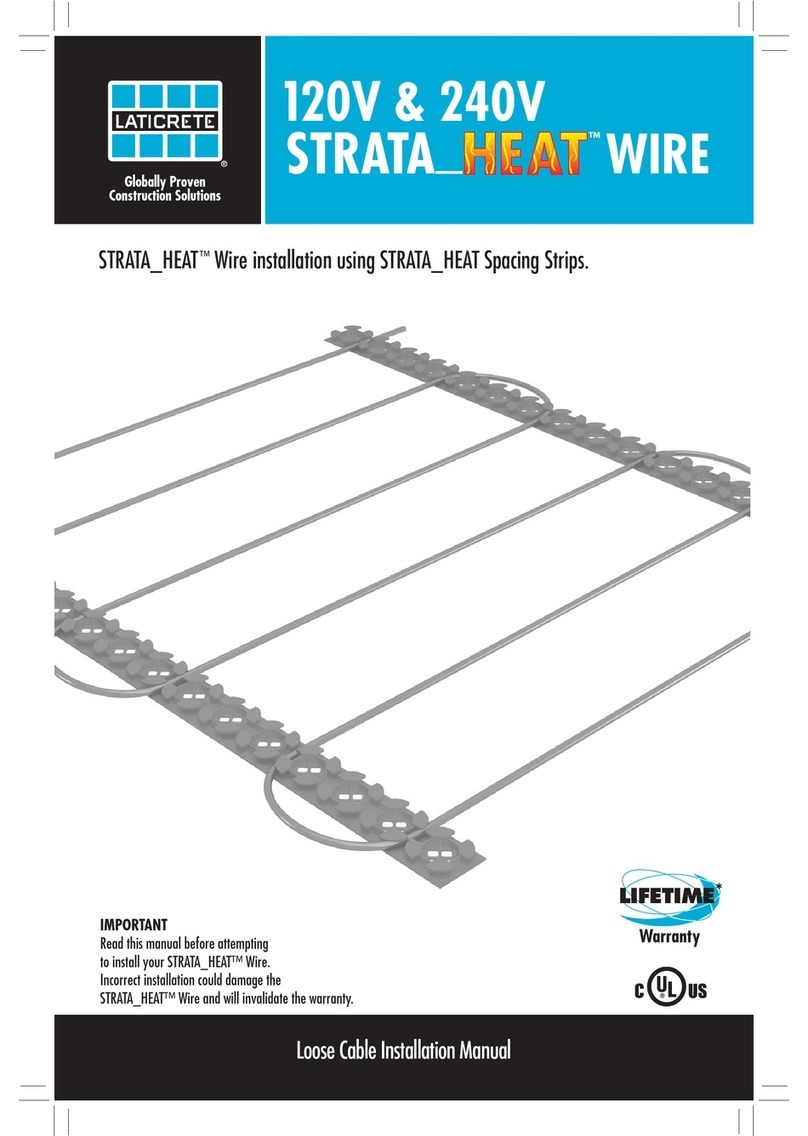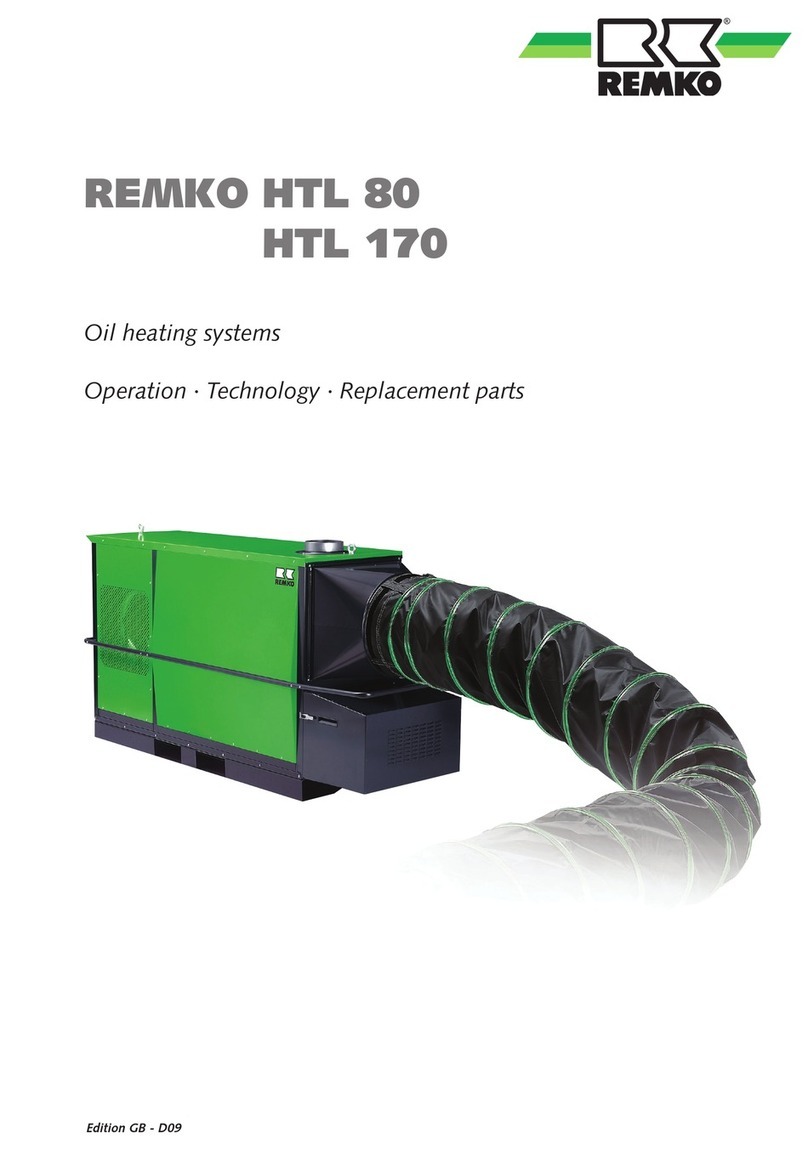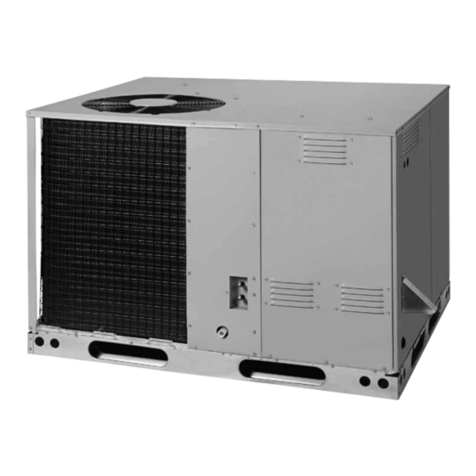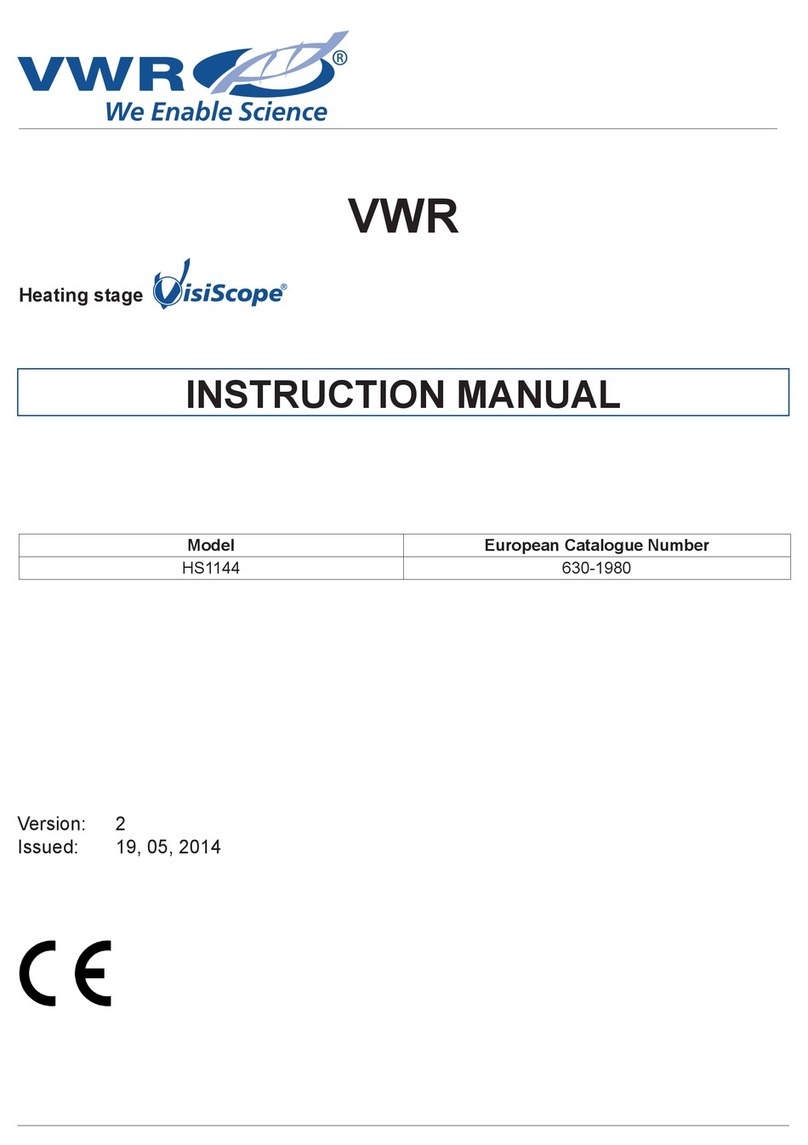Glowworm Standalone User manual

STANDALONE
www.glow-worm.co.uk
System Installation
Standalone system
for heating and hot water


- 1 -
INTRODUCTION
1 Instructions guidance .........................................................................................................................3
1.1 Product documentation...........................................................................................3
1.2 Associated documents ...........................................................................................3
1.3 Explanation of symbols...........................................................................................3
1.4 Guarantee registration............................................................................................3
2 System description.............................................................................................................................3
2.1 Concept of operation ..............................................................................................3
2.2 Example of Installation – Diagram 4 (4.1) : Standalone with 1 low heating
temperature zone (30-40°C) or 1 middle heating temperature zone (< 60°C) .......4
2.3 Example of Installation – Diagram 4 (4.2) : Standalone with 2 low heating
temperature zones (30-40°C) or 2 middle heating temperature zones (< 60°C)....5
2.4 Example of Installation – Diagram 4 (4.3) : Standalone + with 3 low heating
temperature zones (30-40°C) or 3 middle heating temperature zones (< 60°C)....6
2.5 Example of Installation – Diagram 4 : Standalone with Domestic Hot Water
cylinder ...................................................................................................................7
3 Safety instructions and regulations ....................................................................................................8
3.1 Safety instructions ..................................................................................................8
3.2 Regulations.............................................................................................................8
INSTALLATION
4 System appliance installation ............................................................................................................9
4.1 Recommendations before installing .......................................................................9
4.2 Mounting...............................................................................................................10
5 Hydraulic connection........................................................................................................................10
5.1 Heat pump circuit..................................................................................................10
5.2 Heating circuit.......................................................................................................12
5.3 Domestic Hot Water circuit ...................................................................................13
6 Electrical connections ......................................................................................................................15
6.1 Heat pump............................................................................................................15
6.2 Electrical wiring.....................................................................................................15
6.3 Hydraulic module..................................................................................................16
6.4 Systempro control unit..........................................................................................16
TABLE OF CONTENTS

- 2 -
COMMISSIONING
7 Filling the glycol circuit .....................................................................................................................18
8 Activating the heat pump .................................................................................................................19
9 Activating the room thermostat ........................................................................................................20
10 Activating the control unit.................................................................................................................20
10.1 Configuring the installation ...................................................................................20
10.2 Wiring summary....................................................................................................21
10.3 "Thermostat / sensor" menu................................................................................. 21
10.4 Thermostat(s) .......................................................................................................22
10.5 Outdoor sensor.....................................................................................................22
10.6 Self check.............................................................................................................23
10.7 Settings.................................................................................................................23
10.8 Commissioning.....................................................................................................25
10.9 Status reports .......................................................................................................29
10.10 Options .................................................................................................................30
10.11 Heating system test..............................................................................................30
10.12 Finishing ...............................................................................................................30
11 Re-check and restart........................................................................................................................31
12 User information...............................................................................................................................31
MAINTENANCE
13 Trouble-shooting ..............................................................................................................................32
13.1 Fault diagnosis .....................................................................................................32
13.2 Fault codes...........................................................................................................32
13.3 Heat pump status .................................................................................................33
14 Servicing ..........................................................................................................................................33
14.1 Annual Maintenance.............................................................................................33
14.2 Control unit maintenance menu ...........................................................................33
TABLE OF CONTENTS

0020096321_00 - 07/10 - Glow-worm - 3 -
INTRODUCTION
INTRODUCTION
1 Instructions guidance
1.1 Product documentation
The instructions are an integral part of the system appliances
and must be handed to the user on completion of the
installation in order to comply with the current regulation.
• Carefully read the manual, to understand all the information
to enable safe installation, use and servicing. No liability can
be accepted in the event of damage for not complying with
the guidance in this instruction manual.
These instructions consist of, Installation, Servicing, Fault
Finding. The instructions are an integral part of the appliance
and must be handed to the user on completion of the
installation.
1.2 Associated documents
- Heat pump use and installation instructions
- Hydraulic module use and installation instructions
- Systempro Control unit use and installation instructions
- Climapro2 RF programmable Room thermostat use and
installation instructions
- Wireless outdoor sensor installation instructions
- Accessories installation instructions (motorized 2 port valve...)
1.3 Explanation of symbols
aDANGER: Risk of injuries.
eDANGER: Risk of electric shock.
bATTENTION: Risk of damage to the appliance or
to its surroundings.
iIMPORTANT: Important information.
1.4 Guarantee registration
We recommend you complete and return as soon as possible
your guarantee registration card (delivered with the hydraulic
module). If your guarantee registration card is missing you can
obtain a copy or record your registration by telephoning the
Glow-worm Customer Service number 01773 596510.
2 System description
2.1 Concept of operation
The Standalone system consists of the following components:
-AGlow-worm Envirosorb 5 heat pump,
- A "Standalone" hydraulic module,
- The Systempro control unit
- A Climapro2 RF wireless programmable room thermostat,
- A wireless photovoltaic outdoor sensor
The following options may be added to the system:
- 2 port valves for zoning,
- A domestic hot water cylinder.
2.1.1 Operating principle in heating
The system is designed to provide a heating need of 6kW max
at the reference temperature.
The heat generator consists of a heat pump and a hydraulic
module equipped with an electric heater. The heat emitters can
also be low temperature (heated floor, gentle heat radiators...)
or medium temperature (steel panels...). In order to always
obtain the best comfort/economy trade-off, the module heat
pump and/or electric heater supply the heating installation with
hot water at the temperature necessary to obtain the desired
ambient temperature.
When the power of the heat pump is insufficient to provide
heating, the self-controlled electric heater in the module
can operate simultaneously, up to a power of 4kW, as a
backup. This guarantees optimal use of the heat pump while
guaranteeing that the total electrical power consumption will
never exceed 6kW. When the heat pump is not operating, the
electric heater can reach a power level of 6kW.
The changeover point between the heat pump and the electric
heater is managed automatically, depending on the outside and
ambient temperatures. Thus, the system always optimises the
use of the heat pump with respect to the electric top-up heater.
2.1.2 Operating principle of the domestic hot
water system
The domestic hot water heating circuit consists of a heat pump,
a 3-way valve and a FLUROCYL hot water tank equipped with
an electric heater.
In order to always obtain the best comfort/economy trade-off,
the heat pump and/or the FLUROCYL tank electric heater
provide the energy needed to maintain the stored water at the
required temperature.
The lower part of the tank is heated 3 times a day by the heat
pump. In order to provide maximum economy, the electric
heater heats the top part of the tank just to provide the comfort
desired by the user.
The lower the hot water temperature setting, the more the
heat pump will provide energy and, therefore, more economic
operation.

0020096321_00 - 07/10 - Glow-worm
- 4 -
INTRODUCTION
2.2 Example of Installation – Diagram 4 (4.1) : Standalone with 1 low heating temperature zone (30-
40°C) or 1 middle heating temperature zone (< 60°C)
Key
1 Heating circuit (UFH shown, but can be underfloor or
radiators)
2 "Electrical" hydraulic module
3 Climapro2 RF programmable wireless room thermostat
4 Systempro control unit
5 Wireless outdoor sensor
6 "Electrical" hydraulic module electrical supply + protection
(This must have it's own single isolation)
7 Heat pump electrical supply + protection (This must have it's
own single isolation)
8 Heat pump
9 Heat pump circuit filter (not supplied)
10 Glycol PRV discharge
11 Overheating safety (if underfloor heating)
A Heating circuit return
B Heating circuit flow
C Heat pump circuit safety valve discharge
D Heat pump circuit flow
E Heat pump circuit return
iRefer to the chapters “Hydraulic connection” and
“Electrical Connection” to connect the system. bThis diagram shows the case of an installation with
a single zone low temperature heating floor (= outlet
temperature < 40°C).
EBUS
D
E
C
AB
230V230V
1
11
2
3
4
6
5
7
10
9
8

0020096321_00 - 07/10 - Glow-worm - 5 -
INTRODUCTION
2.3 Example of Installation – Diagram 4 (4.2) : Standalone with 2 low heating temperature zones (30-
40°C) or 2 middle heating temperature zones (< 60°C)
iRefer to the chapters “Hydraulic connection” and
“Electrical Connection” to connect the system. bThis diagram shows the case of an installation with a
dual zone low temperature heating floor
(= outlet temperature < 40°C).
Zones must be same temperatures.
230V
EBUS
D
E
C
B
A
230V
2 1
3
5
4
6
7
8
911
10
12
15
14
13
Key
1 Overheating safety (if underfloor heating)
2 Heating circuit "zone 1" (UFH shown, but can be underfloor or
radiators)
3 Climapro2 RF programmable wireless room thermostat "zone 1"
4 2 port valve "heating zone 1"
5 "Electrical" hydraulic module
6 Heating circuit "zone 1" (UFH shown, but can be underfloor or
radiators)
7 Climapro2 RF programmable wireless room thermostat "zone 2"
8 2 port valve "heating zone 2"
9 Systempro control unit
10 Wireless outdoor sensor
11 "Electrical" hydraulic module electrical supply + protection
(This must have it's own single isolation)
12 Heat pump electrical supply + protection (This must have it's
own single isolation)
13 Heat pump
14 Heat pump circuit filter (not supplied)
15 Glycol PRV discharge
A Heating circuit return
B Heating circuit flow
C Heat pump circuit safety valve discharge
D Heat pump circuit flow
E Heat pump circuit return

0020096321_00 - 07/10 - Glow-worm
- 6 -
INTRODUCTION
2.4 Example of Installation – Diagram 4 (4.3) : Standalone + with 3 low heating temperature zones
(30-40°C) or 3 middle heating temperature zones (< 60°C)
iRefer to the chapters “Hydraulic connection” and
“Electrical Connection” to connect the system. bThis diagram shows the case of an installation with a
three zone low temperature heating floor
(= outlet temperature < 40°C).
Zones must be same temperatures.
230V
EBUS
D
E
C
B
A
230V
2 1
3
5
6
4
7
14
13
15
18
17
16
8
9
11 12
10
Key
1 Overheating safety (if underfloor heating)
2 Heating circuit "zone 1" (UFH shown, but can be underfloor or
radiators)
3 Climapro2 RF programmable wireless room thermostat "zone 1"
4 2 port valve "heating zone 1"
5 "Electrical" hydraulic module
6 2 port valve "heating zone 2"
7 Heating circuit "zone 2" (UFH shown, but can be underfloor or
radiators)
8 Climapro2 RF programmable wireless room thermostat "zone 2"
9 Climapro2 RF programmable wireless room thermostat "zone 3"
10 Heating circuit "zone 3" (UFH shown, but can be underfloor or
radiators)
11 2 port valve "heating zone 3"
12 Systempro control unit
13 Wireless outdoor sensor
14 "Electrical" hydraulic module electrical supply + protection
(This must have it's own single isolation)
15 Heat pump electrical supply + protection (This must have it's
own single isolation)
16 Heat pump
17 Heat pump circuit filter (not supplied)
18 Glycol PRV discharge
A Heating circuit return
B Heating circuit flow
C Heat pump circuit safety valve discharge
D Heat pump circuit flow
E Heat pump circuit return

0020096321_00 - 07/10 - Glow-worm - 7 -
INTRODUCTION
2.5 Example of Installation – Diagram 4 : Standalone with Domestic Hot Water cylinder
A Heating circuit return
B Heating circuit flow
C Domestic hot water flow
D Cold water supply
E Heat pump circuit return
F Heat pump circuit flow to cylinder circuit
G Heat pump circuit flow to module circuit
H Heat pump circuit return
Key
1 Overheating safety (if underfloor heating)
2 "Electrical" hydraulic module
3 Systempro control unit
4 Power relay for the electric heater (not supplied)
5 Exchanger tank electric top-up heater
6 Domestic hot water tank
7 "Electrical" hydraulic module electrical supply + protection
(This must have it's own single isolation)
8 Heat pump electrical supply + protection (This must have it's
own single isolation)
9 Heat pump
10 Heat pump circuit filter (not supplied)
11 3 port valve
12 Glycol PRV discharge
iRefer to the chapters “Hydraulic connection” and
“Electrical Connection” to connect the system.
EBUS
230V230V
H
G
E
F
C
D
AB
1
2
3 4
8
10
5
1112
7
8
6
9

0020096321_00 - 07/10 - Glow-worm
- 8 -
INTRODUCTION
3 Safety instructions and regulations
3.1 Safety instructions
eIncorrect installation can cause electric shock or
appliance damage.
• Never disable security devices and do not try to adjust them.
• Be sure to consider the following handling techniques and
precautions:
- Grip the appliance at its base
- Use safety clothing where appropriate, e.g. gloves, safety
footwear.
• Ensure safe lifting techniques are used:
- Keep back straight.
- Avoid twisting at the waist.
- Avoid upper body/top heavy bending.
- Always grip using the palm of the hand.
- Use designated hand holds.
- Keep load as close to body as possible.
- Always use assistance if required.
• Under no circumstances must the user interfere with or
adjust sealed parts.
• When assembling the connections, correctly position the
seals to avoid any leakage of water.
• This appliance contains metal parts. Care should be taken
with regard to edges.
The basic safety instructions must be followed before
attempting to maintain or replace spare parts:
• Stop the appliance.
• Electrically isolate the appliance from the power supply.
• Hydraulically isolate the appliance using the isolation valves
if provided.
• Should you need to replace hydraulic components, drain the
appliance.
• Protect all the electrical components from water while
working on the appliance.
• Use only original spare parts.
• Use only new O-rings and gaskets.
• After having completed work on water carrying components,
check for their tightness.
• When work on the appliance is completed, perform an
operational test and check for safety.
R410A Refrigerant Fluid
bImportant: any action carried out on the
refrigerant circuit must be performed by
qualified authorised personnel.
• Use only R410A refrigerant.
bVenting refrigerating fluid into the atmosphere
is prohibited. The refrigerant must be properly
recovered in a container suitable for recycling.
aThe draining and refilling operations must be
performed in a well-ventilated area and with the
necessary protective equipment (risk of burns).
3.2 Regulations
3.2.1 Statutory requirements
IMPORTANT
Where no British Standards exists, materials and equipment
should be fit for their purpose and of suitable quality and
workmanship.
The installation of this appliance must be carried out by a
competent person in accordance the rules in force in the
countries of destination.
Manufacturer’s instructions must not be taken as overriding
statutory requirements.
Standards
On installing and commissioning the appliance you must adhere to
the technical rules, standards and provisions in effect at the time.
Reminder of existing regulatory acts
- EC regulation No. 20372000 from the 29th of June 2000
This European regulation repeals regulation No. 3093/94
and presents the elimination schedules of CFC and HCFC.
It also deals with the collection of refrigerants, system leaks,
particularly systems containing more than 3 kg of CFC or
HCFC, as well as the minimum level of qualification required
by the technicians.
- EC regulation No. 0842/2006 from the 17th of May 2006
regarding the containment, use, collection and disposal
of the fluorinated greenhouse gases, the labelling and
elimination of the products and equipment containing these
gases, the restriction of use and banning of certain products
from the market, as well as the training and certification of
personnel and companies operating in the activities targeted
by this regulation: refrigeration, air-conditioning, heat pumps
and fire protection systems containing greenhouse gases.
3.2.2 Other regulations
Control of Substances Hazardous to Health
Under Section 6 of The Health and Safety at Work Act 1974, we
are required to provide information on substances hazardous to
health. The adhesives and sealants used in this appliance are
cured and give no known hazard in this state.
The refrigerant used in this appliance is R410a the use of which
is strictly controlled by F Gas regulation EN842/2006.

0020096321_00 - 07/10 - Glow-worm - 9 -
INTRODUCTION
INSTALLATION
4 System appliance installation
4.1 Recommendations before installing
4.1.1 Heating circuit design
General
The heat transmitters may be low temperature (eg underfloor
heating or high temperature (radiator...).
The pipe sections are to be determined using a flow / pressure
curve (refer to the chapter "Activating the control unit" ►
Commissioning ►Heating circuit adjustment"). The distribution
will be determined by the flow corresponding to the power
actually required, regardless of the maximum power that can be
provided by the installation’s generators.
bWe recommend that you allow for sufficient flow
to ensure that the temperature difference between
the flow and the return is equal to 7 K for floor
heating and 15 K for radiators.
bMake sure the heating circuit water flow is greater
than 900 l / h.
Installation pipework must be designed and installed to ensure
venting of air from the system is possible.
bTRVs must be fitted on all radiators, with the
exception to reference rooms.
The total volume of water for the heating circuit depends,
among other factors, on the cold static load of the Hydraulic
module's expansion vessel.
iThe heating system volume should be calculated to
ensure that the expansion vessel is suitable, it may
be necessary to add an additional vessel.
- In GB, Guidance on vessel sizing is also given in the current
issue of BS5449 and BS7074 Part 1.
Il est recommandé de prévoir un robinet de vidange au point le
plus bas de l’installation.
- Drain taps shall be to the current issue of BS2879.
It is recommended that a drainage valve be installed at the
lowest point of the installation.
- Drain taps shall be to the current issue of BS2879.
• Install the following components in the return of the heating
circuit (not supplied):
- a heating filter
- a ¼ turn shut-off valve,
- an air separator (if necessary),
- an anti-sludge filter (if necessary).
• In the case of a heated floor, install a manual reset overheat
safety device (55°C) on the heating circuit flow (refer to the
Chapter - System description). Connect the overheat safety
device to the electric supply for the module circuit board
(refer to the module installation manual).
Water treatment
Existing system- It is essential that prior to installing the new
appliances the system is thoroughly flushed.
New system- For optimum performance after installation, the
appliances and its associated central heating system should
also be flushed.
Flushing shall be carried out in accordance with BS 7593, a
chemical cleanser can be used either Sentinel X300, X400 or
Fernox F3 are suitable.
It is recommended to flush existing systems first before fitting
the new appliances.
• Ensure all cleanser is removed from the whole system before
adding an inhibitor.
For long-term corrosion protection after flushing, an inhibitor
suitable for stainless steel heat exchangers can be used. Either
Sentinel X100 or Fernox F1 inhibitor can be used.
The module is suitable for use on systems using softened water.
4.1.2 Heat pump circuit design
Installation pipework must be designed and installed to ensure
venting of air from the system is possible.
bMake sure the circuit’s water flow corresponds
to the appliance’s nominal water flow.
• Install the following components to the hydraulic module, in
the direction of the heat pump (not supplied):
- a filter,
- a ¼ turn shut –off valve on each side of the filter,
• Install a ¼ turn shutoff valve in the flow of the heat pump.
iIn order to avoid the transmission of vibrations to
surrounding structures, use hoses for the hydraulic
connections at least 1 metre from the heat pump.
bInsulate the pipes with an UV- and high-
temperature-resistant insulation.
4.1.3 Domestic hot water circuit design
Water pressure
The maximum working pressure of the domestic hot water
circuit is 10 bar. If the cold water supply pressure exceeds this,
then a pressure-reducing valve must be fitted in the supply to
the boiler.
‘Hard’ water areas
In areas where the water is ‘hard’ (i.e. more than 200 mg/L
of calcium carbonate), it is recommended that the hot water
setting is reduced and that a scale reducer is fitted, refer to the
manufacturer’s instructions or consult the local water company
for additional advice.

0020096321_00 - 07/10 - Glow-worm
- 10 -
INSTALLATION
4.2 Mounting
iInstall the Systempro control unit near the hydraulic
module to facilitate system commissioning.
• Consult the corresponding installation manual and install the
following elements:
- the heat pump,
- the hydraulic module,
- the Systempro control unit,
- the Climapro2 wireless room thermostat,
- the wireless outdoor sensor.
5 Hydraulic connection
• Take care to clean the pipes before assembly removing any
debris or burrs. Grease and oils may need to be removed
they are not possible to remove by cleansing and flushing.
Foreign bodies in the system may enter the appliance and
interrupt its operation.
• Do not use any solvent products, due to the risk of damaging
the circuit.
• Only use original seals supplied with the appliance.
• Check that there are no leaks. Repair if necessary.
5.1 Heat pump circuit
• Comply with the values given in the table below when
making the hydraulic connections of the heat pump circuit.
Linear distance (without elbows or
additional pressure drops) Min. diameter of tubes to
be installed
≤20 m Ø ¾"
≤30 m Ø 1"
bIn the case of an installation with the domestic
hot water tank option, deduce the pressure drop
of the 3-way valve with respect to the max. linear
distance allowed between the domestic hot water
tank and the PAC + between the PAC and the
hydraulic module (see chapter "Connection of an
exchanger tank for domestic hot water").
5.1.1 Connection to the heat pump
bInsulate the pipes with an UV- and high-
temperature-resistant insulation.
1m min.
4
2
1
3
5 6
7
8
key
1 Heat pump flow circuit ¼ turn shut-off valve in the direction of
the building (not included)
2 Return circuit ¼ turn shut-off valve in the direction of the heat
pump (not included)
3 Return circuit hose in the direction of the heat pump (not
supplied)
4 Cap
5 Return connection (Ø1 ") to the heat pump
6 Flow heat pump connection (Ø1 ") to the building
7 Flow heat pump circuit hose in the direction of the building
(not supplied))
8 Insulation (not supplied)
• Remove the protection caps (4) located on the connections.
• Connect a hose (3) and a shut-off valve (2) to the return
connection (5) to the heat pump.
• Connect a hose (7) and a shut-off valve (1) to the flow heat
pump connection (6) in the direction of the building.

0020096321_00 - 07/10 - Glow-worm - 11 -
INSTALLATION
5.1.2 Connection to the hydraulic module
bInsulate the pipes with an UV- and high-
temperature-resistant insulation.
7
5
6
1
2
3
4
Key
1 Insulation (not supplied
2 Heat pump return circuit
3 Return connection (Ø ¾") to the heat pump
4 Return circuit ¼ turn shut-off valve in the direction of the heat
pump (not included)
5 Flow heat pump connection (Ø ¾") to the building
6 Flow heat pump circuit to the building
7 Filter (not supplied)
• Install a filter to the circuit returning to the heat pump. Install
it between the 2 shut-off valves in order to be able to remove
it from the circuit and clean it periodically.
• Connect the flow heat pump circuit (6).
• Connect the return circuit (2) to the heat pump.
5.1.3 Connection of the domestic hot water
cylinder (option)
• Refer to the instructions supplied with the 3-way valve
and the domestic hot water cylinder for their hydraulic
connections to the heat pump circuit.
iThe pressure loss of the 3-way valve has an
equivalent length tubes ¾ " or 1" for 2m.
• Deduce the pressure loss from the 3-way valve compared to
the authorized max. linear distance of the heat pump circuit.
5.1.4 Removal of condensate
When the heat pump is operational, it will produce condensation
that needs to be drained off.
1
2
3
A
1
3
2
B
Key
A Configuration with inclination to the left
B Configuration with inclination to the right
1 Heat pump
2 Plug
3 Drainage elbow
• Insert the drainage elbow (3) and pipe into the correct
opening depending on the angle of the heat pump.
• Seal off the other opening with the supplied plug (2).

0020096321_00 - 07/10 - Glow-worm
- 12 -
INSTALLATION
5.2 Heating circuit
5.2.1 Connection from the hydraulic module to
the heating circuit
iMake the connection limiting the load losses to a
minimum (the circuit should be as short as possible,
avoid bends and narrow sections...).
5 6
7
1
3
4
2
Key
1 Heating circuit
2 Return heating tubing leading to the hydraulic module (not
included)
3 Return heating circuit ¼ turn shut-off valve leading to the
hydraulic module (not included)
4 Return heating circuit filter leading to the hydraulic module
(not supplied)
5 Return heating connection (Ø ¾") leading to the hydraulic
module
6 Flow heating connection (Ø ¾") leading to the hydraulic
module
7 Flow heating tubing leading to the hydraulic module (not
included)
• Connect a pipe (2) to the return connection (5) leading to the
hydraulic module.
• Connect a pipe (7) to the flow connection (6) leading away
from the hydraulic module.
• Connect the pipes (2) and (7) to the heating circuit.

0020096321_00 - 07/10 - Glow-worm - 13 -
INSTALLATION
5.3 Domestic Hot Water circuit
bThe motorised 2-port valve delivered with the
FLUROCYL cylinder is not necessary for the
STANDALONE system.
A
D
F
E
B
C
AB
4
5
63
7
8
9
1
2
10
11
12
13
Key
1 Domestic hot water cylinder
2 Upper temperature sensor
3 Hot water connection
4 Thermostat mixer
5 Legionnella loop (optional)
6 Pump
7 Expansion vessel
8 Temperature and pressure relief valve (95°C, 7 bar)
9 Pressure limiting valve (3.5 bar) with line strainer
10 Expansion relief valve (6.0 bar)
11 Motorised 2 port valve
12 Tundish
13 Flurocyl drain valve
A Heat pump circuit return
B Heat pump circuit flow
C Domestic hot water flow
D Cold water supply
E Tundish discharge
F Drain point

0020096321_00 - 07/10 - Glow-worm
- 14 -
INSTALLATION
5.3.1 Domestic hot water pipework
• Connect the hot water outlet to the 22mm hot water
connection of the cylinder.
• Lay a further 22mm pipe to the first T-piece.
A pipe of 15mm diameter should then be sufficient.
• If the pipe is very long or several outlets are supplied,
continue with another 22mm pipe.
5.3.2 Thermostatic mixing valve
A hot water thermostatic mixing valve ensures the hot water
from the cylinder is mixed with cold water to a desired maximum
temperature between 30°C and 60°C.
• Set the thermostatic mixing valve to the desired maximum
temperature during the system commissioning.
aRisk of scalding! Set the thermostat mixer to
60°C or below and check the temperature at
a hot water tap to ensure effective protection
against scalding.
5.3.3 Mains water supply
The performance of unvented cylinders depends on the
available mains water pressure and the pipe size.
In order for the performance of the Flurocyl cylinder to be
ideal, an appropriate cold water supply must be available.
The measured static pressure must be at least 2.0 bar. A
corresponding flow rate of at least 20 - 25 l/min should be
available.
NOTE: The mains water pressure is reduced during periods of
high water consumption. Make sure you take measurements
during these periods.
Example: The available flow rate of mixed water at 40°C is 25
l/min (15 l/min hot water of 60°C from the cylinder mixed with
10 l/min cold water of 10°C) if the measured static cold mains
water pressure is 2 bar.
The cylinder operates satisfactorily at a mains water pressure of
below 2 bar, but at a reduced flow rate. The unvented cylinder
should not be installed if the mains water pressure is below 1
bar. You can obtain information on alternative hot water supply
systems from Glow-worm.
To keep the friction losses at a minimum, a minimum diameter
of 22mm is recommended for the cold water supply in the
building, satisfactory performances can also be achieved with
15mm pipes however.
5.3.4 Cold water inlet controls and pipework
• Connect both parts of the water control pack.
• When installing the valves, make sure they are aligned in
such a way that the 15mm connection of the expansion relief
valve can be connected to the tundish.
• Install the assembled water control pack in the cold water
supply at an appropriate place next to the cylinder.
• Make sure there is sufficient space for maintenance and the
connection of the discharge pipe from the expansion relief
valve.
• Install the drain valve in the cold water supply at the lowest
point between the cylinder and the water control pack.
We recommend applying a hose, which reaches about 1m
under the base of the cylinder, to the outlet of the drain valve.
bRisk of bursts for the cylinder! No stop valve
may be installed between the cold water control
pack and the cylinder.
• Install the water pack so that a discharge pipe of the
expansion relief valve can be fitted with constant outward
slope which can end at a safe, visible point where there is no
risk of freezing.
bRisk of the cylinder bursting due to
overpressure! The outlet of the expansion relief
valve must not be covered or closed.
• Test the expansion relief valve regularly to avoid calcification.
To ensure an optimum performance of the cylinder, in
particularly buildings in which a pressure controlled cold water
is used, copper pipes with a diameter of at least 22mm should
be used for the pipe from the main stop valve of the building to
the cylinder.
If the discharge pipes are all together, the expansion relief
valve may not be installed more than 500 mm away from the
temperature and pressure relief valve.
The Flurocyl cylinder is supplied with an external hot water
expansion vessel (DW EV).
• Connect this expansion vessel to the installed water control
pack as follows:
• Screw the expansion vessel directly onto the water control
pack, via the connection intended for this purpose or
• Connect the expansion vessel to the water control pack
with a copper pipe or an appropriate hose. Make sure the
expansion vessel is supported sufficiently.
• Use the supplied mounting bracket if the expansion vessel is
to be mounted on the wall.
• Connect thermostatic mixing valve cold supply to the
pressure controlled cold water connection of the water
control pack (if convenient).
iIn areas with high water pressure (4 bar or more), a
bath or shower mixer valve could also be connected
to the pressure-controlled cold water connection
of the water control pack. This is to ensure the
pressure of the hot and cold water supply to the
mixer valve is about the same. Any second cold
water supply connection should be installed between
the water control pack and the cylinder by means of
a T-piece.

0020096321_00 - 07/10 - Glow-worm - 15 -
INSTALLATION
6 Electrical connections
eIncorrect installation can cause electric shock or
appliance damage. The electrical connection of
the appliance must be made only by a qualified
engineer.
The appliance must be connected directly to an accessible,
fixed, switched, electrical outlet.
The manufacturer declines any responsibility for damages to
persons or others caused by the incorrect installation of the
appliance earthing. This includes failure to comply with current
standards.
Electrical components have been tested to meet the equivalent
requirements of BSEN 7671 and the BEAB regulations.
Main board
20 mm max.
12
Key
1 Electrical wires
2 Insulation
When you connect the electrical wires to a connector on the
electronic board:
• Maintain a maximum distance of 20 mm between the
connector and the outer insulation.
• If using single core wires are used ensure that they are
wrapped together in an insulating sheath.
6.1 Heat pump
The cables connecting the isolator and the heat pump must be:
- suitable for a fixed installation.
- weather resistant.
- equipped with wires adapted to appliance’s power rating.
• Connect the heat pump to an electrical panel via an
independent protection system (20A differential breaker with
at least 3 mm between each contact).
Additional protection may be required during installation to
ensure overvoltage category II.
6.1.1 Access to main board
B
A
2
1
Key
1 Handle
2 Box
• Remove the box (2) by pulling it toward you using the handle
(1).
6.2 Electrical wiring
eInsert the Ebus 24V cable and 230V power cable
in different casings.
B
A
5
4
3
2
1
6
Key
1 230 V supply connection terminal block
2 Ebus connection terminal
3 Clamp for Ebus cable
4 Clamp for 230 V power cable
5 Access hatch to electrical connections
6 Access hatch screw
• Remove the screw (6) from the access hatch (5).
• Open the access hatch (5).
Ebus Connection
• Connect a 2 x 0.75 mm ² cable to the heat pump’s BUS
terminal (2).
• Pass the cable through the cable clamp (3).
• Connect the Ebus cable to the Systempro control unit.
• Tighten the clamp.
230V Connection
• Connect a 3 x 2.5 mm ² cable to the heat pump’s power
terminal 230V (1).
• Pass the cable through the cable clamp (4).
• Connect the heat pump’s power cable to the installation’s
electrical panel: single-phase network 230V + neutral + earth.
• Close the access hatch with the screw (6).
• Tighten the clamp.

0020096321_00 - 07/10 - Glow-worm
- 16 -
INSTALLATION
6.3 Hydraulic module
• Connect the hydraulic module to an electrical panel via an
independent protective system (32A differential breaker with
a separation of at least 3mm between all contacts).
Additional protection may be required during installation to
ensure overvoltage category II.
EBUS Connection
1
Key
1 Ebus connection terminal
• Connect a 2 x 0.75 mm ² cable to the hydraulic module’s
BUS terminal (2).
• Connect the Ebus cable to the Systempro control unit.
230V Connection
• Connect a 3 x 4 mm ² cable to the hydraulic module’s power
terminal 230V (1).
• Connect the hydraulic module’s power cable to the
installation’s electrical panel: single-phase network 230V +
neutral + earth.
6.4 Systempro control unit
• The electrical installation in the dwelling must permit the
power supply to the equipment to be isolated by a double
pole isolation switch and be fused. The double pole isolation
switch must incorporate a gap of 3mm between the contacts.
• Use a power cable suitable for the mains connection,
minimum 0.75 mm. If the cable is damaged, it must be
replaced by a qualified engineer.
6.4.1 Wiring to the Systempro control unit
D
C
B
E
A5
1
2
3
4
Key
1 230 V power cable
2 Break out tab
3 Anti-tamper connection
4 Power connection
5 Control unit
• Gently remove the break out tab (2) from the control unit with
pliers (A).
• Connect the control unit following the order (B) to (D).
• Pass the power cable (1) through the anti-tamper connector
(3).
• Connect the power supply to the 230 V connector (4)
following the instructions given on the connector.
• Tighten the power cable (1) in the anti-tamper connector (3).

0020096321_00 - 07/10 - Glow-worm - 17 -
INSTALLATION
6.4.2 Internal connection
230V connection (High voltage)
13
LN
230V~
13
LN
REL1
13
LN
REL2
13
LN
REL3
12
LN
REL4
12
LN
REL5
12
LNIN1
321
Key
1 230 V connector (3-pin: earth / neutral / live)
2 Connectors (3 pins: earth / neutral / live): REL1, REL2 and
REL3
3 Connectors (2 pins: live / neutral): REL4, REL5 and IN1
24V connection (Low voltage)
12
21
OUT1
12
21
OUT2
12
21
OUT3
12
21IN2
12
21IN3
12
21
NTC1
12
21
NTC2
12
21
NTC3
12
21
NTC4
12
-+
EBUS
12
-+
EBUS
12
-+
EBUS
21
Key
1 Connectors (2 pins) OUT1, OUT2, OUT3, IN2, IN3, NTC1, NTC2,
NTC3 and NTC4
2 EBUS connectors (2 pins)
6.4.3 System connection
• Refer to the table below for the wiring of the systempro.
- Diagram 4 (4.1) : Standalone with 1 low heating
temperature zone (30-40°C) or 1 middle heating
temperature zone (< 60°C)
Key Description Cable min.
230V~ Control unit electrical supply 3 x 0.75 mm²
REL1 Domestic hot water cylinder 3-way valve 3 x 0.75 mm²
REL2 16A power relay for the domestic hot water
cylinder electric heater (not supplied) 3 x 0.75 mm²
NTC2 DHW cylinder thermistor (*) 2 x 0.75 mm²
EBUS EBUS connection of the heat pump 2 x 0.75 mm²
EBUS EBUS connection of the hydraulic module 2 x 0.75 mm²
- Diagram 4 (4.2) : Standalone with 2 low heating
temperature zones (30-40°C) or 2 middle heating
temperature zones (< 60°C)
Key Description Cable min.
230V~ Control unit electrical supply 3 x 0.75 mm²
REL1 Domestic hot water cylinder 3-way valve 3 x 0.75 mm²
REL2 16A power relay for the domestic hot water
cylinder electric heater (not supplied) 3 x 0.75 mm²
REL4 Heating circuit 2 port valve "area 2" 3 x 0.75 mm²
REL5 Heating circuit 2 port valve "area 1" 3 x 0.75 mm²
NTC2 DHW cylinder thermistor (*) 2 x 0.75 mm²
EBUS EBUS connection of the heat pump 2 x 0.75 mm²
EBUS EBUS connection of the hydraulic module 2 x 0.75 mm²
- Diagram 4 (4.3) : Standalone with 3 low heating
temperature zones (30-40°C) or 3 middle heating
temperature zones (< 60°C)
Key Description Cable min.
230V~ Control unit electrical supply 3 x 0.75 mm²
REL1 Domestic hot water cylinder 3-way valve 3 x 0.75 mm²
REL2 16A power relay for the domestic hot water
cylinder electric heater (not supplied) 3 x 0.75 mm²
REL3 Heating circuit 2 port valve "area 3" 3 x 0.75 mm²
REL4 Heating circuit 2 port valve "area 2" 3 x 0.75 mm²
REL5 Heating circuit 2 port valve "area 1" 3 x 0.75 mm²
NTC2 DHW cylinder thermistor (*) 2 x 0.75 mm²
EBUS EBUS connection of the heat pump 2 x 0.75 mm²
EBUS EBUS connection of the hydraulic module 2 x 0.75 mm²

0020096321_00 - 07/10 - Glow-worm
- 18 -
INSTALLATION
6.4.4 Connection of the 2 port valve
13
LN
230V~
13
LN
REL1
13
LN
REL2
13
LN
REL3
12
LN
REL4
12
LN
REL5
12
LNIN1
When the 2 port valve is connected to REL3:
• Connect the neutral wire (blue) of the valve to the “N” of the
REL3 connector.
• Connect the live wire (brown) of the valve to the “L” of the
REL3 connector.
• Connect the earth wire (yellow/green) of the valve to the
earth of the REL3 connector.
• Electrically insulate the red and grey wires of the valve as
they are not used.
When the 2 port valve is connected to REL4 or 5:
• Connect the neutral wire (blue) of the valve to the “N” and
the live wire (brown) of the valve to the “L” of the REL4 or 5
connector.
• Connect the earth wire (yellow/green) of the valve to the
earth of the REL3 connector.
• Electrically insulate the red and grey wires of the valve as
they are not used.
Commissioning
• Open all the hydraulic circuits’ valves.
7 Filling the glycol circuit
bWarning! Do not dispose of glycol into drains
and the environment.
bWe recommend that you use propylene glycol
enriched with corrosive inhibitors.
• Mix 1 part propylene glycol with 2 parts water. This
mixture ensures antifreeze protection down to an exterior
temperature of -15 °C.
• Use an antifreeze test kit to ensure accurate dosing.
Ø14
A
B
1
3
4
1
2
Key
1 Air trap
2 Ø 14 mm flat wrench (*)
3 Hose
4 Deposit (*)
(*) Not included
• Connect one end of the hose (3) to the trap (1).
• Insert the other end of the hose (3) into the container (4) in
order to recover any residual brine during the filling of the
circuit.
• Using a flat wrench (2), open the trap (1) a ¼ turn.
Table of contents
Other Glowworm Heating System manuals
